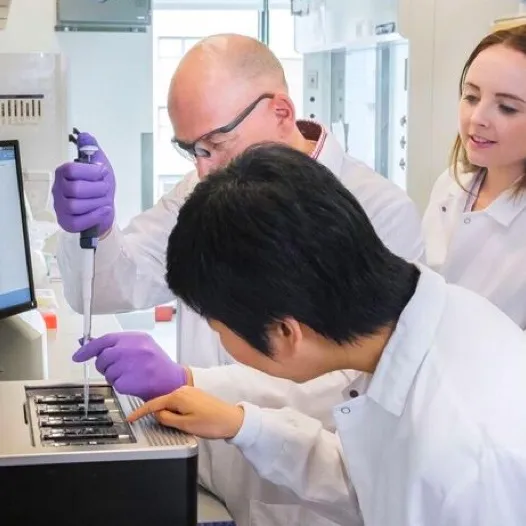Oxford Nanopore Technologies is a biotechnology company that specializes in the development and commercialization of nanopore-based sequencing technologies. Their innovative sequencing platforms allow for the analysis of DNA, RNA, and proteins with high speed, accuracy, and portability.
Oxford Nanopore’s technology is renowned for its real-time sequencing capabilities, enabling applications in various fields such as genomics, infectious disease surveillance, environmental monitoring, and more.
Who Is Oxford Nanopore?
Established in 2005 as a spin-off from the University of Oxford, Oxford Nanopore Technologies plc has expanded its workforce to over 1000 employees with expertise spanning nanopore science, molecular biology, informatics, engineering, electronics, manufacturing, and commercialization. Under the leadership of CEO Dr. Gordon Sanghera, the management team has a proven history of introducing groundbreaking technologies to the market.
Applications of Oxford Nanopore
The versatility of nanopore-based sequencing technology enables a wide range of applications in genomics, infectious disease surveillance, environmental monitoring, and beyond. Oxford Nanopore’s platforms have been used for genome sequencing, metagenomics, RNA sequencing, epigenetics, and more.
Nanopore and Cancer Research
Cancer has various genetic causes, including different types of genetic changes like single nucleotide variations (SNVs), structural variations (SVs), fusion transcripts, and epigenetic modifications such as DNA/RNA methylation.
In the past, researchers used several methods to study these different aspects of cancer. However, with nanopore sequencing, which can produce sequencing data of any length, including very long reads exceeding 4 million bases, and can detect modifications in the DNA bases in real-time, scientists now have a faster and more efficient way to fully understand cancer samples.

The Technology Behind Oxford Nanopore
Oxford Nanopore Technologies utilizes nanopore-based sequencing technology, a revolutionary approach to genetic analysis. Here’s how it works:
Nanopores: At the heart of the technology are nanopores, tiny openings just a few nanometers in diameter, embedded in a membrane. These nanopores can be made from various materials, such as proteins or solid-state materials like graphene.
DNA/RNA Sequencing: When a DNA or RNA molecule passes through a nanopore, it disrupts the flow of ions across the membrane in a characteristic manner. This disruption is detected as changes in electrical current, allowing the identification of individual nucleotides along the DNA or RNA strand.
Real-Time Analysis: One of the key features of Oxford Nanopore’s technology is its ability to provide real-time analysis. As DNA or RNA molecules pass through the nanopore, the changes in electrical current are detected and analyzed in real-time, allowing for the continuous generation of sequence data.
Scalability: Another advantage of nanopore-based sequencing is its scalability. Oxford Nanopore’s platforms can be scaled from small, portable devices that fit in a researcher’s pocket to larger instruments suitable for high-throughput sequencing in research laboratories or clinical settings.
Long Read Lengths: Oxford Nanopore’s technology is capable of sequencing DNA or RNA fragments of any length, from short fragments to ultra-long fragments spanning tens of thousands of base pairs. This long-read capability is particularly valuable for applications such as genome assembly and structural variant detection.
Conclusion
Overall, Oxford Nanopore’s technology represents a groundbreaking approach to genetic analysis, offering real-time, scalable, and long-read sequencing capabilities that have the potential to transform research and clinical practice in various fields.















